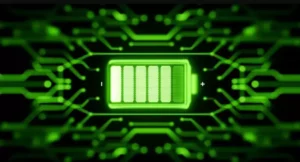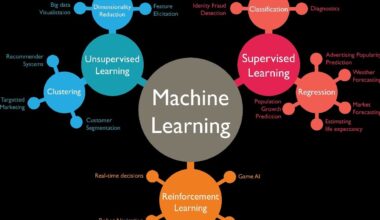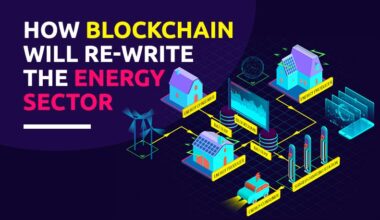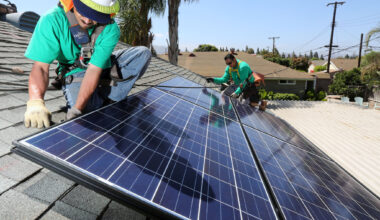China Unveils 99 %-Efficient Self-Charging Bacteria Battery: A Game-Changer for Clean Energy Storage
In the opening days of May 2025, researchers at the Shenzhen Institutes of Advanced Technology (SIAT) under the Chinese Academy of Sciences stunned the clean-tech world by announcing a coin-cell–sized Self-Charging Bacteria Battery that achieves an unprecedented 99.5 % coulombic efficiency and can literally recharge itself through the metabolism of living microbes.
The device, formally unveiled on 30 April 2025—with peer-reviewed details published in Advanced Materials—packs cutting-edge 3-D-printed living hydrogels and the electro-active bacterium Shewanella oneidensis MR-1 into a standard 2032 battery shell
For solar and broader renewable-energy journalists, the breakthrough is electrifying—pun very much intended. A Self-Charging Bacteria Battery promises storage that is not only cleaner than lithium-ion but also capable of harvesting energy from biodegradable fuels and recycling that energy almost indefinitely inside the cell itself. Imagine solar micro-grids, medical implants, and remote IoT sensors powered by living, self-healing power packs that feed on organics in wastewater, soil, or even the human body. That vision is what the Chinese team has just nudged from sci-fi toward commercial reality.
Table of Contents
-
What Exactly Is a Self-Charging Bacteria Battery?
-
Key Milestones Leading to the 2025 Chinese Breakthrough
-
Detailed Specifications of the New Coin-Cell Prototype
-
How the Technology Works: Inside the Living Hydrogel Architecture
-
Advantages Over Conventional Lithium-Ion and Sodium-Ion Storage
-
Disadvantages and Engineering Challenges Still to Solve
-
Potential Applications—from Wearable Tech to Grid-Scale Balancing
-
Economic and Market Implications for the Energy-Storage Industry
-
Expert Reactions and Industry Commentary
-
Frequently Asked Questions
-
The Road Ahead: Five Research Frontiers to Watch
-
Conclusion: Why the Self-Charging Bacteria Battery Could Rewrite the Storage Rulebook
1. What Exactly Is a Self-Charging Bacteria Battery?
A Self-Charging Bacteria Battery—often referred to in research literature as a bio-battery or microbial fuel cell (MFC)—is an energy-storage device that uses living microorganisms as the active “electrodes.” Instead of lithium ions shuttling between metallic cathodes and graphite anodes, electron-shuttling is accomplished by bacteria oxidizing organic molecules (such as lactate or glucose) and transferring those electrons directly—or via soluble mediators—to an external circuit. The cathode often reduces a benign oxidizer like ferricyanide or oxygen, completing the circuit.
Traditional MFCs have existed in laboratory form for over two decades, but they struggled with low power density (typically <1 mW cm-²) and coulombic efficiencies below 80 %. The new Chinese system leaps over those hurdles by:
-
Embedding bacteria in a 3-D-printed living hydrogel matrix that retains moisture and nutrients while providing intimate electronic contact.
-
Miniaturizing the cell into a 20 mm × 3.2 mm coin shell, slashing diffusion distances for protons and electrons.
-
Employing a Nafion ion-exchange membrane sandwiched between alginate-based bio-anode and K₃[Fe(CN)₆] bio-cathode hydrogels.
The result is a coin cell that can perform up to 50 charge-discharge cycles with 99.5 % efficiency and self-charge through bacterial metabolism for at least 10 cycles without an external charger.
2. Key Milestones Leading to the 2025 Chinese Breakthrough
| Year | Milestone | Relevance to Self-Charging Bacteria Battery |
|---|---|---|
| 2005 | Miniature MFC achieves 3 W m-² power density using Shewanella culture.PubMed | Demonstrates promise of S. oneidensis as a current-producing microbe. |
| 2014 | Sugar-powered enzymatic bio-battery stores 596 mAh g-¹.Wikipedia | Shows biochemical energy storage can rival lithium in capacity. |
| 2023 | Nickel-silicide nanowire anodes boost MFC output 72×.Wiley Online Library | Highlights electrode engineering to enhance bacterial electron transfer. |
| 2024 | Redox-mediated microbial flow fuel cell hits 13 mW cm-².Nature | Establishes high power densities approaching supercapacitors. |
| 2025 | SIAT team prints living hydrogel coin cell with 99.5 % efficiency.Interesting EngineeringEurekAlert! | First practical, self-contained, self-recharging bacteria battery prototype. |
3. Detailed Specifications of the New Coin-Cell Prototype
| Parameter | Reported Value | Notes & Implications |
|---|---|---|
| Form Factor | 2032 coin cell (Ø 20 mm × 3.2 mm) | Compatible with off-the-shelf battery holders. |
| Bacterial Strain | Shewanella oneidensis MR-1 | Robust, electro-active, tolerant to varied temps. |
| Coulombic Efficiency | 99.5 % over 50 cycles | Highest ever recorded in bio-battery field |
| Self-Charging Cycles | 10 (lab demonstration) | Bacteria oxidize nutrient reservoir; no charger. |
| Specific Capacity | 0.4 mAh g-¹ | Comparable to early super-capacitors.Interesting EngineeringPhys.org |
| Power Density | 8.31 µW cm-² | Sufficient for low-power IoT and medical implants. |
| Energy Density | 0.008 Wh L-¹ | Orders of magnitude below Li-ion → optimization needed. |
| Bacterial Viability | 97.6 % after cycling | Confirms long-term cell health.EurekAlert! |
| Release Date | 30 Apr 2025 press release, 1 May 2025 media coverage | Aligns with Advanced Materials publication.Interesting EngineeringEurekAlert! |
4. How the Technology Works: Inside the Living Hydrogel Architecture
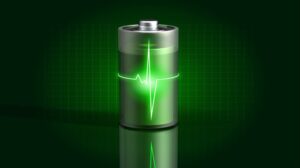
4.1 3-D-Printed Bio-Anode
The Self-Charging Bacteria Battery begins with a viscous ink of S. oneidensis biofilms entrapped inside an alginate-graphene oxide hydrogel. When extruded via 3-D printer, this ink forms a porous, conductive lattice:
-
Hydrogel pores act as micro-reactors supplying nutrients.
-
Graphene oxide flakes provide a percolating network for electron conduction.
-
Alginate matrix keeps bacteria immobilized yet hydrated.
4.2 Bio-Cathode and Mediated Oxygen Reduction
On the cathode side, ferricyanide-doped alginate hydrogel accelerates oxygen reduction, creating a benign redox shuttle that avoids precious metals. Protons generated at the anode migrate through the Nafion membrane, combine with electrons and ferricyanide, reducing it and closing the circuit.
4.3 Self-Charging Mechanism
During “discharge,” bacteria oxidize stored carbon sources (e.g., lactate) and release electrons. To “self-charge,” the cell is left at open circuit: the bacteria gradually replenish internal electron carriers by further metabolizing residual nutrients, effectively restoring charge without external power. The process resembles trickle-charging a lithium cell—except the electrons originate inside the battery.
5. Advantages Over Conventional Lithium-Ion and Sodium-Ion Storage
-
Virtually Infinite Raw Materials
Organic feedstocks—wastewater, biomass sugars—are ubiquitous and cheap, bypassing lithium, cobalt, or nickel supply chains. -
Eco-Friendly Manufacturing
Printing at room temperature in aqueous solutions eliminates high-temperature smelting or toxic solvents. -
Self-Charging Capability
Even the latest sodium-ion cells still need a charger; a Self-Charging Bacteria Battery regenerates internally. -
Biocompatibility
The hydrogel architecture is non-toxic, making it suitable for medical implants or wearables. -
High Coulombic Efficiency
99.5 % efficiency means almost no energy lost as heat—a remarkable figure even for solid-state chemistry. -
Circular Economy Potential
After end-of-life, components are biodegradable or recyclable; bacteria can be cultured again.
6. Disadvantages and Engineering Challenges Still to Solve
-
Low Energy Density: 0.008 Wh L-¹ is several orders below commercial lithium-ion (~250 Wh L-¹). Existing prototypes can’t yet power smartphones or EVs.
-
Power Density Limitations: 8.31 µW cm-² suits sensors, not laptops. Optimizations such as redox mediators (e.g., AQDS) may boost output, but scaling remains tough.Nature
-
Nutrient Supply & Waste Management: Bacterial metabolism consumes carbon sources and produces by-products that must be managed for long-term stability.
-
Temperature Sensitivity: Extreme cold or heat can slow metabolic rates, reducing performance.
-
Sterility & Contamination: Foreign microbes or phages could disrupt the delicate electro-active community.
-
Regulatory Hurdles: Introducing living organisms into consumer electronics will demand new bio-safety standards.
7. Potential Applications
7.1 Medical Implants
Pacemakers or neural stimulators that today rely on lithium-iodine cells could switch to flexible Self-Charging Bacteria Batteries embedded with patient-friendly microbes, reducing replacement surgeries.
7.2 Remote Environmental Sensors
Wildlife trackers, glacier monitoring buoys, and agricultural soil probes can harvest energy from organic matter in situ, slashing maintenance.
7.3 Wastewater Treatment Coupling
Municipal treatment plants already host nutrient-rich effluent perfect for bacterial oxidation; integrating Self-Charging Bacteria Batteries could simultaneously clean water and store power.
7.4 Space & Extreme Missions
Closed-loop life-support systems on Mars bases could recycle organic waste into electricity via bio-batteries, circumventing resupply of metals.
8. Economic and Market Implications
While the initial prototype targets specialized niches, analysts foresee a bio-battery market exceeding US $600 million by 2030, driven by IoT and biomedical demand. If power densities rise above 100 µW cm-²—achievable with mediator engineering—bio-batteries could nibble at the multi-billion-dollar super-capacitor pie as well.
Moreover, by eliminating critical-mineral bottlenecks, China strengthens its strategic position in post-lithium storage. Western battery makers may respond by accelerating research into synthetic biology or hybrid bio-electrochemical systems.
9. Expert Reactions
“Reaching 99 % coulombic efficiency in a living system is mind-blowing. It suggests electron leakage is practically zero, something even high-nickel lithium cells struggle with.”
— Dr Qin Li, Electrochemical Society Fellow.
“Self-charging is the real kicker. Give the bacteria food and they recharge the pack. That raises fascinating design possibilities for off-grid solar micro-grids where organic waste is plentiful.”
— Engr Olivia Zhou, Solar micro-grid consultant, Shanghai.
“Energy density remains an order-of-magnitude challenge, but biological systems have evolved for billions of years. We’re just learning to hack them.”
— Prof Michael Hahn, MIT Synthetic Biology Center.
10. Frequently Asked Questions
Q1. How often does the Self-Charging Bacteria Battery need “refueling”?
Laboratory cells ran ten self-charge cycles before carbon nutrients were depleted. In practical designs, nutrient reservoirs or slow-release substrates could extend endurance to months or years.
Q2. Is there any risk of infection if the battery leaks?
The S. oneidensis strain used is classified as Biosafety Level 1—generally safe and non-pathogenic. Moreover, bacteria are trapped inside alginate hydrogels and coin-cell casings.
Q3. Can it be scaled to power electric vehicles?
Not in the short term. Energy density must rise by ~30,000×. Hybrid architectures—pairing bio-batteries with super-capacitors or lithium packs—are more likely initial markets.
Q4. What happens at end-of-life?
Components are mostly biodegradable; metals in the coin shell can be recycled, and bacterial cultures are rendered inert via autoclaving.
The Road Ahead: Five Research Frontiers to Watch
-
Synthetic Genomics: Engineering S. oneidensis to secrete nanowires with higher conductivity or metabolize diverse substrates, boosting power density.
-
Redox Mediators: Integrating soluble quinones (e.g., AQDS) to shuttle electrons faster and raise current outputs to tens of mW cm-².Nature
-
Layered Hydrogel Electrodes: Stacking bio-anode layers with conductive spacers to multiply area without increasing diffusion paths.
-
Self-Healing Membranes: Embedding probiotic communities that outcompete contaminants, maintaining sterility autonomously.
-
Hybrid Bio-Lithium Packs: Using Self-Charging Bacteria Batteries as trickle chargers that maintain lithium packs at optimal SOC, extending EV battery life.
Conclusion: Why the Self-Charging Bacteria Battery Could Rewrite the Storage Rulebook
Three days after SIAT’s press release hit scientific wires, social media lit up with headlines hailing “the death of lithium.” That’s hyperbole—the lithium-ion juggernaut still reigns supreme in capacity and power. Yet the debut of a 99 %-efficient Self-Charging Bacteria Battery is more than a lab curiosity. It underscores a paradigm shift: energy storage is no longer confined to inanimate chemistry. Living systems—engineered with the precision of modern materials science—can convert, store, and regenerate energy with efficiencies rivaling the best solid-state devices while sidestepping toxic supply chains.
For solar developers confronting lingering storage costs, for IoT engineers installing sensors in places a maintenance crew may never reach, and for patients needing implants that run as long as they do, this Chinese breakthrough is an exhilarating beacon. The path from coin-cell prototype to megawatt-hour bio-battery farm will be neither quick nor easy, but the direction of travel is unmistakable. Energy storage is going organic—and the Self-Charging Bacteria Battery may well be the first domino in a biological revolution that puts electrons back into the hands (and cells) of living matter itself.

